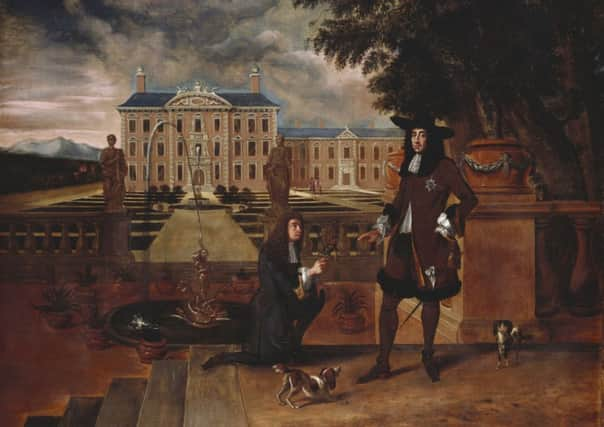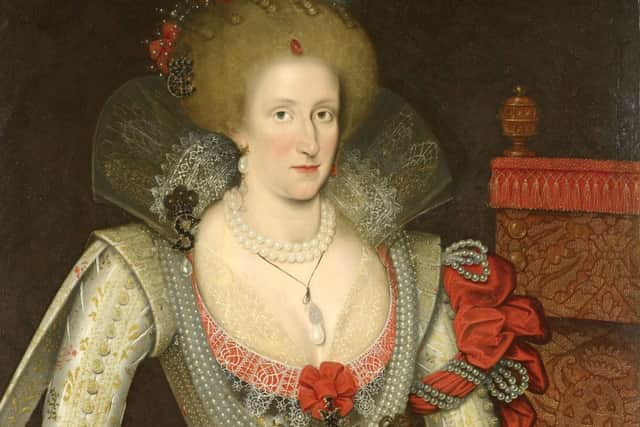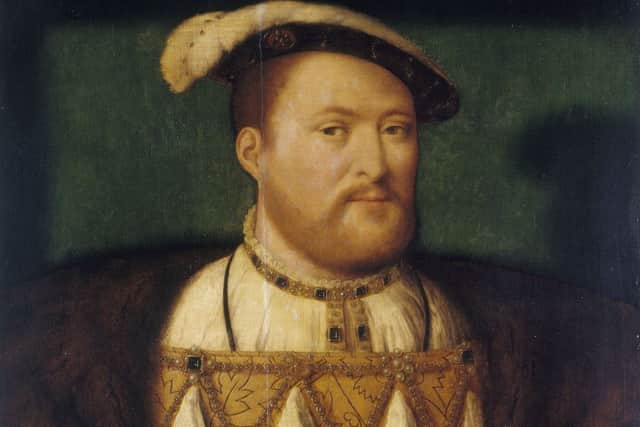Period piece: Fashion of the Tudors and Stuarts


WHEN a husband starts divorce proceedings, it takes a special kind of person to sit and carefully embroider several fine shirts for his next season’s wardrobe rather than set about the crotches of his suits with a pair of pinking shears. Catherine of Aragon was a special kind of person. She was queen for a start, and when your husband is Henry VIII, perhaps it’s best not to up the ante too quickly and lose your head.
According to Anna Reynolds, curator of In Fine Style: The Art Of Tudor And Stuart Fashion, an exhibition of paintings and artefacts opening this week at The Queen’s Gallery, Palace of Holyroodhouse, relations between the pair never reached the clothes-ripping stage. They had been married for 24 years and Henry’s actions were fuelled by his need for an heir, so Catherine sewed on and Henry got his shirts for autumn/winter 1526.
Advertisement
Hide AdAdvertisement
Hide Ad“The divorce was more down to the succession than disagreements between them and she still considered herself his wife. She kept doing the shirts and blackwork embroidery, which was much copied,” says Reynolds, curator of Paintings, Royal Collection Trust.


The royals have always been leaders of style and extensively copied, from Elizabeth I’s extra-long-fingered gloves to Kate Middleton’s fuchsia Seraphine dress that sold out online in two hours after she wore it for the first baby George portraits. The 16th and 17th century perhaps saw the zenith of the monarchy’s effect on fashion and through 36 paintings and drawings and 70 objects including jewellery from The Royal Collection, it’s clear how fashion and luxurious clothing were of paramount importance to Tudor and Stuart kings and queens.
“Monarchs used fashion to signal their power and wealth and courtiers too were expected to wear fine dress to reflect the glory of the monarch,” says Reynolds. “This was a much more visual age where very few people could read, so the messages sent by appearance and a portrait were hugely important.”
Only the wealthiest in society could afford to be fashionable, with white linen and flax taking 20 processes over months to make and handmade lace costing vast amounts, but it was worth it, as political and personal success could be measured and influenced by personal appearance. If your ruffle wilted in the drizzle and the layers and pleats had to be reset and starched every week, no matter, what are servants for? Poster girl for the exhibition, Queen Anne of Denmark, in her 1614 portrait by Gheeraerts is wearing an elaborate dress whose yards-long skirt had to be pinned in place every time she wore it.
Both Henry VIII and his daughter Elizabeth I enforced laws about how people could dress. Gold wrapped thread was only for individuals of high status and purple velvet was usually reserved for royals. Elizabeth went as far as banning anything “novel” or “invented” to preserve her status as arbiter of fashion.


A shift in the extravagant spending came with the accession of the Stuart monarchs who had bankrupted themselves getting back on the throne, and in the 1670s Charles II decided to fight back against the dazzling foppery of the French court of Louis XIV. In a bid to teach his nobles thrift and keep bullion at home, he came up with the precursor of the three-piece suit, an all-season long vest worn under a coat, instead of a short doublet (snug jacket) and cloak. The look, which can be seen in the painting Charles II Presented With A Pineapple, from 1675, was such a hit with fashionable society that diarist Samuel Pepys was wearing his own three weeks later.
Masculine clothing for women is another trend big in Stuart times, despite James VI and I having had it denounced in church sermons to dissuade women from wearing doublet-style bodices, hats and male hairstyles. It caught on anyway, and his wife, Queen Anne of Denmark, was painted in her jaunty hunting hat and gloves by Paul Van Somer in 1617. By 1675, Mary of Modena, second wife of James II was posing for a portrait in a masculine-style riding coat and even sporting a man’s periwig.
“It was seen as shocking for women to dress in practical male clothing because it contradicted notions of masculinity and femininity,” says Reynolds.
Advertisement
Hide AdAdvertisement
Hide AdAccessories were important as well; quirky and ostentatious, from gilt purses in the shape of frogs, to jewels set with gobstopper-sized rubies, emeralds and diamonds, such as the Darnley or Lennox Jewel, probably made for the Countess of Lennox, Mary, Queen of Scots’ mother-in-law in the 1570s to commemorate the deaths of her husband and murdered son, Lord Darnley.
“Things like the frog purse in the exhibition exemplify the idea that fashion is all about novelty and helping you stand out from the crowd. Fashion still has that purpose; being different or slightly controversial is a way of pushing boundaries,” says Reynolds.
“Even if they don’t know the artist or the sitter, people love to talk about clothing, how beautifully the fur is painted, or to wonder whether the clothes were heavy, or uncomfortable. The clothes bring us closer to the past because they are something we can all immediately relate to today.”
Twitter: @JanetChristie2
• In Fine Style: The Art Of Tudor And Stuart Fashion, The Queen’s Gallery, Palace of Holyroodhouse, 14 March-20 July 2014, tickets and information 0131-556 5100